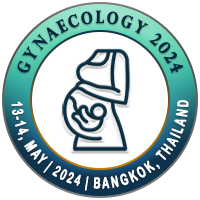
Rajitha D
Gadag Institute of Medical Sciences, IndiaTitle: Analysis of indications of caesarean section using Robson ten group classification
Abstract
Introduction: Caesarean section is one of the most frequently performed surgical operations in the world today. Over the past 4.5 decades there has been a dramatic increase in the caesarean section rates in both, developed as well as developing countries. To propose and implement effective measures to reduce or increase caesarean section rates where necessary requires an appropriate classification. We are analysing the CS rates by classifying the caesarean sections using Robson’s ten group classification (TGCS). It will be important to evaluate whether the Robson’s classification is feasible one to use in our setting and if so, it could provide a solution for ongoing monitoring. This constitutes the matter of the research being proposed.
Objectives of the study:
1. To analyse caesarean section proportion and indications associated with it, in tertiary hospital GIMS, Gadag.
2. To classify the caesarean section using Robson’s ten group classification system.
Method: All the woman who admitted in tertiary hospital and completed the period of viability (28 weeks) and undergoing caesarean section at GIMS, Gadag. A Prospective study of the caesarean sections characteristics was performed, evaluating the woman in labour units using information about the parity, gestational age, onset of labour-spontaneous or induced, lie, presentation and multiple pregnancies, mode of delivery as well as the previous deliveries were collected from all the woman. The obstetric concepts, with their parameters used to group and categorise the woman in the 10 group classification are the category of the pregnancies, the previous obstetric record of the woman, the course of labour and delivery and the gestation age of pregnancy.
Results: Total number of deliveries during the month of April 2022 was 559. The total number of Caesarean section were 323 and the total number of vaginal deliveries were 236. The caesarean section rate is 57.8%. The main contributors to the overall caesarean section rate were Group 5- 19.5%, Group 1- 11.4% and Group 2- 14.1%. Group 7- 0.4%, Group 8- 0.4%, and Group 9- 0% did not contribute much to the overall CS.
Interpretation and conclusion: Robson classification is easily implementable and an effective tool for ongoing surveillance. The results can be compared between institutions, states and countries. All hospitals and hospital authorities can use the Robson’s classification system as part of a quality improvement initiative to monitor caesarean section rates.
Biography
WILL BE UPDATED SOON

